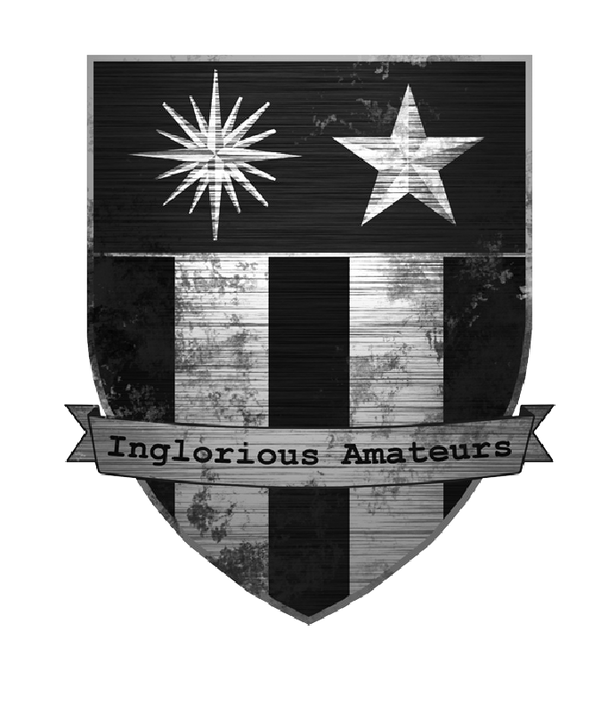The CIA Book of Honor
Share
You’ve seen it on countless TV shows and movies. A character slowly pushes open the glass doors and walks in to a marble foyer reminiscent in its solemnity of a national monument or even a mausoleum. Displayed on the floor in front of you is the infamous logo of the CIA, a mosaic in shades of marble grey in the lobby of Original Headquarters Building. The lobby is spare, a security officer and a couple of turnstiles the only sign of permanent activity, the officer eying you as you make your way towards him.
Turning your head to the left, you see a memorial to the men and women of the OSS, Office of Strategic Services, in WWII, their sacrifice collectively recognized by one large star chiseled in the marble. Above star is an inscription, “IN HONOR OF THOSE MEMBERS OF THE OFFICE OF STRATEGIC SERVICES WHO GAVE THEIR LIVES IN THE SERVICE OF THEIR COUNTRY.” A statue of General "Wild Bill" Donovan in bronze, and the American flag, frame the OSS Book of Honor, containing the names of the 116 OSS officers who fell in the line of duty, out of the 7500 who served overseas.
Across the lobby, on the north wall, is another memorial, and Book of Honor. This one is flanked by both the American flag and the Agency flag. Above the cased book is another inscription, "IN HONOR OF THOSE MEMBERS OF THE CENTRAL INTELLIGENCE AGENCY WHO GAVE THEIR LIVES IN THE SERVICE OF THEIR COUNTRY ," and this time, more stars. 111, with 4 new ones added in May 2014, representing the men and women of the CIA who have given their lives while in the service of our nation. The memorial was built in 1974, after a request by Agency officers to honor those who had died in Southeast Asia. Initially the wall contained 31 stars, recognizing the sacrifice of officers from 1950 through the early 70's.
The Book of Honor itself is compelling, drawing your eyes downward to its gold stars and hand-calligraphied names, but equally compelling are the stars without names. Those stars honor those officers who remain anonymous heroes even in death, their stories known only to the few they served with, and maybe their families. Only 80 of the 111 have names next to them, the majority of which are from 1950 to late 1970's. Time and distance from events often mean the names may well be added later, when their operations are declassified and their stories can be told.
By the time I headed overseas, there were 71 stars on the wall, 35 of which were named. As a newly minted Clandestine Services Officer (we were called Case Officers then), I would walk past the Wall and wonder about the stories of sacrifice of the men and women represented there. Their losses made very real the risks that my new career posed.

Photo of Douglas Mackiernan courtesy of the WashingtonPost
The earliest of those stories is that of Douglas Mackiernan, represented by the first star on the wall. His death in April 1950 had only been marked by a star until his name was added in 2006, 6 years after the Agency had acknowledged publicly his death in service. Mackiernan was shot by Tibetan border guards while crossing the Chinese border into Tibet.

Larry Freedman - Arlington National Cemetery, Section Eight, No. 10177
Another compelling story is that of Lawrence "Gus" Freedman, also known as "SuperJew", who was killed in 1992 in Somalia when the jeep he was riding in hit a land mine. Having already had a distinguished military career as a Special Forces soldier in Vietnam and then as an early member of Delta Force, Gus joined the Agency only 6 months after I did. I met him first at the Farm and then in the hallways of Africa Division, although I was never fortunate enough to work directly with him. As a new Career Trainee, men like Gus, held us in thrall with the stories of adventure they shared. HQS was a place he hated and was ill suited for, his pony tail and Delta experience a contrast to the Cold Warriors who filled HQS hallways, the field was his natural environment. It was several months later after his death that another officer with Gus that day, also wounded himself, shared with me the story of Gus' sacrifice. Gus spent just over two years at the Agency but his flamboyant personality had an outsized impact on Special Activities Division, where he had found his home. Having earned a couple of Bronze Stars and the Purple Heart in Vietnam, Gus was posthumously awarded the CIA's Intelligence Star.
Other stars on the wall represented stories, like those of William Buckley and Richard Welch, both active Chiefs of Station, and the victims of the Beirut Embassy bombings, were used as cautionary tales and object lessons to those of us being trained for assignments in hazardous locations. By learning their stories, we would be better prepared for our assignments.
When I left the Agency a decade later, some six more stars had been added, totaling 77 and still only 35 names were represented in the Book of Honor. While more stars have been added since, many tragically as a result of the War on Terror, more of the previously unnamed heroes in the Book of Honor have since been revealed, including Barry Castiglione, Matthew Gannon, Freddie Woodruff, Jackie Van Landingham, Molly Hardy and many others. We hope to share their stories, and many others, on these pages.
